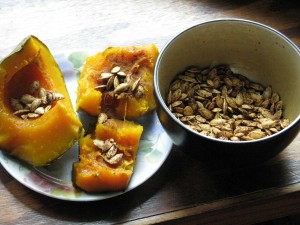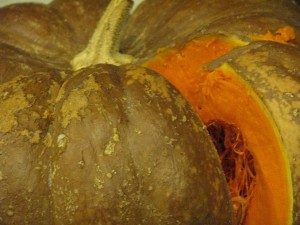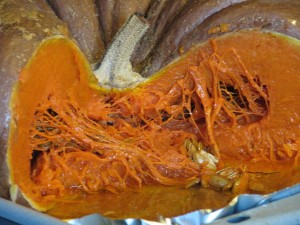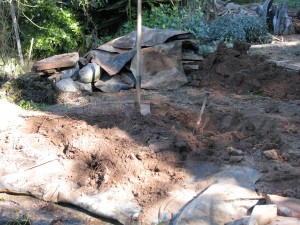-
What I Accomplished Today

It takes a village... to put on a roof! (Thanks, Julie, for the photo.) The roof of the greenhouse was lifted by a whole group of my friends, who all helped to try and fit it onto the base. After a good half an hour of futzing, we gave up and left it. The roof was on but wouldn’t slide into place anywhere. Today I returned to spray it with cooking oil, bathe it in soapy warm water, pour capfuls of boiling water onto it, and remeasure and re-balance the entire thing. Still no luck. I circled around it dozens of times poking and prying at the panels with the included glazing tool. Finally, I put the door on (which wasn’t easy, either), and said, “That’s it for today, folks!” Tomorrow I’ll try their customer service and see if they have any miracle solutions.

The roof is (almost) on. Besides that, though, I hooked up my outdoor sink! Something I’ve wanted for at least ten years. I saved the kitchen sink when I had my kitchen remodeled and it has been disappearing under red apple iceplant between times I’ve had to lug it into a new storage place. Now it sits on top of an old fishtank stand, which stands on the top of an old picnic table. I bought an extremely cheap plastic shower sprayer and connected it to a garden hose and… voila! An outdoor sink! Two buckets underneath catch water. Now not only can I wash my hands, but I can rinse my veggies (especially the root veggies) outdoors and throw all that good dirty water right back into the garden. Some women want diamonds… silly them! They don’t know about outdoor sinks!

My outdoor sink! Not beautiful, but 100% recycled! Maybe I should make a little curtain for it. I also was industrious and fixed a leaky water pipe, attached handles to the doors of my two sheds,

Shiny handles. Its the small things in life that can make you happy. and planted many flower bulbs. The bulbs were purchased in a bulb frenzy, as I am wont to experience, before Christmas. They all should have been in the ground already, but I only managed some daffodils which are now coming up. All around the trees I’m planting ranunculus, daffodils, crocus, tulips (with protection!), and my favorite flower scent freesia. A productive day, even if the @#$%* greenhouse roof didn’t fit yet!
-
Building a Rion Eco-Grow Greenhouse

Greenhouse in a box! Yes, I finally decided upon which greenhouse to buy. It took a year and a lot of research and waiting. I did go back and forth about just throwing some plastic over bowed PVC pipes, but I wanted something that lasted and didn’t look like a piece of junk. Most greenhouses that I wanted were over $1,000, and that was just not going to work. Also, I needed diffused light rather than clear glass or plastic because most of the year here the sun really cooks things. Diffused light will help keep the seedlings from scorching. Since I’m absolutely not a carpenter, and would be assembling this myself, I needed something that went together fairly easily. I found the Rion Eco-Grow, a small greenhouse that snaps together and yet can be enlarged later (http://www.riongreenhousekit.com/rion-ecogrow.php). It isn’t made of aluminum, which can bend easily, and the double plastic ‘windows’ diffused light. It is delivered by standard carrier, not flatbed truck, so the packages are manageable and you aren’t expected to help unload them. It came with a seven-year warrenty and had very good customer reviews on other websites. I not only bought it on sale, but it came with a choice of a gift, and I chose the solar light.

I guess they didn’t fit through the little package door! Last Wednesday I came home to find a couple of friends waiting for me. The boxes were about 60 pounds apiece, but I just levered them onto my garden cart (the best thing I ever bought!) and hauled them down to where the greenhouse was going.

Sorting the parts and leveling the ground took a whole afternoon. Well, it wasn’t easy, putting that thing together. After sorting parts, many of which were not labelled, and then leveling the area where the base would be constructed, it was already an afternoon shot. The next day I started fitting pieces together and trying to figure out the miniscule diagrams. It really is ingeniously thought out.

Pushing together the hardware was fun. Only when it came to fitting glazing on over the roof panels did the very, very bad time happen. I worked for a day and a half on just those glazing; they wouldn’t go in! They recommend soapy water. I had so much soapy water that it was dripping in my shoes. Finally I brought down my electric kettle and poured hot water on some of them. It worked for all except one end, which still isn’t going anywhere. It will have to stay like that.

In pergatory they make you try to assemble the roof parts… forever. When I started work, the ground was pretty dry. Then a puddle was forming in the mud at my feet and I realized that there was a leak in the pipe nearby, so I shut off the outside water until I can fix it. Then I was hurrying to be done before the rain last week, and I didn’t make it. Then, since it was very muddy and I was having so much trouble with the roof I thought I’d back out my riding mower out of the shed and haul the roof inside onto level flooring constructed using waterproof materials Miracote to see if that made any difference. I didn’t get far. I started the mower, tried to reverse, couldn’t clear the entrance way with the mower deck, then realized in only about two minutes time that the exhaust had filled the shed and I was getting sick. I shut off the mower and got out of there. That was the end of that work day, as I recovered my breathing and severe headache in the house. I tasted exhaust in my mouth for a long time afterwards.

Sophie checking on my progress. Then it rained again, and I spent a day running errands. Today I constructed the door and then noticed a spot in the middle that wouldn’t brush off.

What is that mark in the middle….? A spider had worked its way down between the lines of the panel and made a little web! He would certainly die in there, and I’d be watching him do it. So of course I took apart the entire top part of the door, wedged out the panel and blew down the lines, and he popped out the other side. Nothing I can do about the web he left, though.

A spider! Had to get that poor guy out of there I managed to complete everything except for placing the roof on the top. Tomorrow I’ll have help and we’ll do a ‘barn raising’, or, at least, raise the roof, after that, I’ll finally be able to start my project on organic greenhouse production.

All ready to raise the roof! Assembly tips: sort out every piece of equipment. Not all of the pieces are labeled, and some of the panels are only a hair’s difference in size, so measure and mark them all… it will save a lot of re-doing and cursing. Wear gloves. Not so much that the panels will cut you, but they really help save your hands when you are pressing and pressing and pressing and sliding your hands up and down plastic pieces to get them to fit together. If you have issues with your hands and wrists (as I especially do now!) this will be tough on you. Use lots of warm soapy water, and for pieces that either absolutely won’t go together, or for those that did and now need to come apart because they popped out of place, pour boiling water slowly down all pieces concerned. It really does help! Be sure to work on a level surface, even for constructing the roof. Give yourself a break and go do something else for awhile, then come back to the problem. Don’t use a rock to force a piece into place because the plastic will chip off. Ahem.
I’ll post a final photo when I set up shop!
-
Streusel Gingerbread Muffins

Gingerbread Streusel Muffins I love gingerbread. Take gingerbread, put some extra zing to it with freshly grated ginger, deepen the dark flavor with a tablespoon of cocoa, and sprinkle some gingery streusel on the top and wow, what a muffin!
Streusel Gingerbread MuffinsAuthor: Diane C. KennedyRecipe type: Breakfast/DessertPrep time:Cook time:Total time:Serves: 18These gingerbread muffins have an extra kick and a deeper flavor from special ingredients.Ingredients- 2 cups all-purpose flour
- 1½ teaspoons baking soda
- 1½ teaspoons ground ginger
- 1 tablespoon unsweetened baking cocoa
- 1 teaspoon salt
- 1 teaspoon cinnamon
- ⅛ teaspoon ground nutmeg
- ⅛ teaspoon ground cloves
- 1 tablespoon freshly grated ginger root
- ½ cup dark molasses
- ½ cup granulated sugar
- ½ cup vegetable oil
- ½ cup boiling water
- 2 large eggs, whisked
- Streusel topping:
- 1 cup granulated or brown sugar
- 2 tablespoons cinnamon
- ½ teaspoon ground ginger
- 2 tablespoons finely minced candied ginger
- 1 cup all-purpose flour
- ½ cup (one stick) butter, softened
- ½ cup all-purpose flour
- 4 tablespoons butter, softened
Instructions- Preheat oven to 325F.
- Line or grease 18 muffin cups.
- In a large bowl, sift together flour, baking soda, ground ginger, salt, cinnamon, nutmeg, cloves and cocoa powder.
- In a medium bowl, whisk together molasses, sugar, oil, water, eggs and grated fresh ginger.
- Add molasses mixture to flour mixture until well combined.
- Divide batter evenly among prepared muffin cups (an ice cream scoop really works!), each cup half full.
- In a medium bowl, combine the sugar, cinnamon, ground ginger and flour.
- Cut the butter into small bits and using a pastry blender, forks or your fingers, work the butter into the mixture until it is crumbly and there are no large chunks of butter.
- Stir in minced candied ginger.
- Sprinkle streusel on top of muffins, pressing lightly to firm it up.
- Bake 18 - 24 minutes, or until wooden toothpick inserted in the centers of the muffins comes out cleanly.
- Remove muffins from oven and cool.
-
A New-Fangled Coop

The new coop I’ve been trying to find a warmer coop for my hens. The chicken tractor that they occupy is not only non-mobile, but is open on all sides with only scant shelter in the nesting ledge. This won’t do. I have tarps draped all over it, and raise and lower them with the sun to keep my girls from being in the wind. It isn’t perfect. Not being a carpenter, I have to search for what I want, and I’ve been searching for coops so much on the Internet that for awhile almost every ad that popped up was for coops! Most coops come unassembled, and not only are extremely pricey but look very thin-walled. Last Saturday over breakfast (of eggs, of course) I tried Craigslist. There were several used coops for sale, but not only would I have to disassemble and reassemble them, but the possibility of transferring disease or bugs was high. Then there appeared a new ad for coops in Temecula, just half and hour away from me! The Knotty Bird (https://sites.google.com/site/theknottybirdcompany/contact-us) is a home business of Crystal Braught. She and her husband create the coops in their home, and house their own flock of lovelies in the backyard. The three styles of coops that were offered were very well thought-out, and I loved the strawberry pyramid that was also offered. I had a wonderful talk with Crystal, who grows organic veg and recommended to me a most excellent seed source, Baker Creek Heirloom Seeds (http://rareseeds.com/) which not only offers hundreds of seeds from around the world, but sells only organic seed.

Access to the nestboxes, a small entrance, and the far bottom side lifts up for cleaning or expansion. So I bought the middle-sized coop at a very reasonable price and hauled it home. (This all sounds so easy! But not for me! I wanted to use my son’s truck, but the insurance and registration had been let go. I spent awhile on the phone adding the truck to my insurance, and then trying in vain to register it on the DMV site. Then halfway there on the freeway the brakes began to grind and it sounded as if metal was dragging on the tire. I pulled off and looked, but didn’t discover anything. When I arrived safely (whew) home with the coop, I had to unload it alone so I propped up a planter, some wood, a piece of plywood I had to haul up from the bottom of the property, and then slowly walk the bottomless coop out of the truck and slowly down the plywood without destroying it or me. It weighs over 100 lbs. I haven’t lost my touch; all safe and sound).

I put newspaper-lined nursery flats under the roost, which turned out to be a bad move. I placed a couple of nursery flats lined with paper under their new roost upstairs for easy clean-up, and fluffed straw into the two small nestboxes. The coop I walked until it was over tall grass that I wanted gone. Then I brought the three girls up, one by one. They loved it. They scratched and tore off pieces of grass and had a grand time. At dusk, though, they stood there looking at me. Finally Chickpea went up the ramp into the living quarters. With some encouragement and direction from me, Miss Amelia and Lark finally went up there too. I still partially covered the coop with a blanket because it was going to be a cold and possibly windy night. Emerson, in his lonely cage at the lower end of the property, was quite the sad guy.

The roof on one side can be propped open for cleaning. In the morning I fed the dogs outside and noticed that the girls hadn’t come downstairs. I waited and later went out and they still weren’t! I opened the side to peek, and found that they had moved one of the lined nursery flats over the exit hole! Poor girls! I moved it and they eagerly came down, but weren’ that interested in the grass anymore. I thought maybe they’d eaten too much the day before. They stood and watched me work. Very eerie.

The three girls enjoying the grass I tried to encourage them back up the ramp to the nesting boxes, but they would have none of it. Finally, exasperated, I opened the door and they scuttled down the hill and it was an easy thing to shoo them into their old cold coop. Chickpea went right up the ramp to lay an egg. My poor girls! The coop may not work for these girls, but now I have a seperate place for the Frizzles I want to get come spring! And instead of one large coop with a lot of pecking and competition, I can have several small coops placed around the property, each being a chicken tractor while the girls scratch up the grass and feed the soil.
Apparently,
-
Re-Ponding, Part 3

Filling it up (that's a hummingbird decal on the window, not a giant hummer!) Just in case you are breathlessly awaiting the next installment of the re-ponding project, I’ll alleviate the suspense. The pond is now shaped as I would like it, with a nice flat shallow end towards the back and a kidney shape. Later I’ll add more contours around the edge so that the parts aren’t rounded; that will not only give it a pleasant shape, but give it more edge, which is much safer for the survival of tadpoles.
By cutting into the irrigation, the pond can be fed with well water instead of domestic water which is not only less expensive, but much healthier. Allowing the water to run down the sides and kneading the clay by hand washes the fine clay particles into the pond. There they can settle and seal the sides.

There is lots of clay in this soil! Every few hours I stirred the pond so as to stir up more clay and have it resettle on the sides.
Now I’m allowing the water level to go down to see if any part of the pond has sealed yet. When the water stops disappearing, I’ll know the bottom and some of the sides are already sealed. This cold weather has made me a little hesitant to be working in the water… brrr! Because of that the pond will probably not be done this week, but I’m working on it.

Stirring up the reddish clay. If sealing the sides with clay in this manner doesn’t work, then I’ll need to separate clay out by hand and mash it onto the sides, kind of like making pottery. That will definitely have to wait until later this week when the daytime temperature rises! Meanwhile as the water sinks, I’m weeding, transplanting, weeding, composting, hauling, and did I mention weeding?
-
Pepitas (Roasted Pumpkin Seeds)

Chili-lime pepitas are wonderful as a topping! All those lovely seeds that you scrape out of pumpkins and winter squash are little nuggets of nutrition, including protein. Pepitas can be a little chewy, but have a popcorn-like flavor and can be very addicting. To seperate the freshly scraped seeds from the pumpkin fibers that encase them, plop the whole mess into a bowl full of water and rub with your fingers. The seeds seperate easily. Compost the fibers, and dry the seeds. You can do this by blotting them or wringing them out in a towel, or allowing to set in a sieve, if you aren’t in a hurry.
Pepitas (Roasted Pumpkin Seeds)Author: Diane C. KennedyRecipe type: SnackPrep time:Cook time: -
How To Preserve Squash and Pumpkin

Test for doneness; if the flesh isn't soft, continue baking. You have this wonderful pumpkin sitting around, waiting to be eaten. The holidays pass and… there it sits. You don’t want to let it go bad, but you don’t have a use for it right away. What to do?
Here’s how to make your own pumpkin or squash puree and preserve it by freezing. I haven’t seen reliable methods of canning puree so I opt for the freezer method in plastic bags. I know, I too want to eliminate plastic bags from my life. However I own freezer bags and I will use them.

Stack the freezer bags and freeze flat First of all, choose a pumpkin bred for taste, such as Sugar Baby; Jack o’lantern pumpkins aren’t that tasty and are usually very fibrous. Wash your pumpkin or winter squash (not summer squash, like zucchini or crookneck) without soap. There are two good options for cooking the squash (pumpkin is a type of squash, so I’ll just say squash from now on): steaming or baking. Baking is the best method in my opinion. First of all, you can stick the whole squash into the oven and bake it, whereas if steaming you must cut up the squash and with some of these hard-skinned beauties that task can be difficult and dangerous (it is easy for the knife to slip). Secondly, steaming adds a lot of moisture to the squash, and it must be drained after pureeing before you freeze it, or else it will be too watery to use in pies and other baked goods. I steam squash when I want to serve it for dinner because it is quick and it preserves nutrients. Baking removes a lot of the moisture and increases the flavor of the squash. Some people recommend boiling it, but the squash would have to be whole, and dealing with a huge pot of boiling water is just not necessary.
If you are going to be obstinate and want to steam the squash, then cut it up, scoop out the seeds (save for replanting or making pepitas, recipe: Pepitas 1/15/12), steam until fork-tender, scoop out the flesh, puree it in batches, and leave it sit in a bowl, covered, in the refrigerator overnight. Water will seep out. Or tie into cheesecloth suspended over a bowl and allow to drain.

Quarter and scoop the seeds out of small pumpkins. If you are going to bake it, heat the oven to 400 degrees F. Lightly oil the outside of the washed squash. Line a baking dish with foil. If you have a whopper, just pop in the pumpkin (remove the stem if there is one).

You can bake a whole squash. If you have a thinner skinned pumpkin, you can carefully cut it into quarters, scoop out the seeds, and place on a piece of foil on a cookie sheet. I bake them face-up to improve flavor and remove moisture.

Baking brings out the flavor. Bake a large squash for about 60 minutes, until you can slide a knife easily into it. If you have a large, thick-skinned squash, you may need to leave it in up to another half an hour. If you have a thinner skinned pumpkin such as Sugar Baby, you may test it for doneness after 45 minutes. Allow the squash to cool, then slice it into chunks. Scoop out the seeds (no good for planting now, but still good for making pepitas) and then scoop out the flesh from the skin. Puree flesh in batches until there is no fiber left. If the puree looks thin (think of the consistency of canned pumpkin), then either leave it covered in a bowl in the ‘fridge overnight and pour off excess water the next day, or strain through a cheesecloth.

After baking it isn't pretty, but it sure is easy to cut! Once your puree is ready to go, then I suggest you measure it by 3/4 cupfuls into plastic freezer bags. That’s how much puree is in a 15 -oz can of pumpkin, and what pie recipes call for. Or if you have other recipes in mind with other measurements, freeze in those increments.

Some squash like this Cinderella pumpkin is more fiberous than others After filling the freezer bags (and I guarantee that you’ll get pumpkin everywhere!), flatten the bags and place on a cookie sheet that will fit into your freezer. Stack the bags (make sure to label with type of squash and date!) and freeze. They will be flat and much easier to deal with. Freeze for about six months.
Of course, before you freeze it all, save 1/2 a cup and make my Spiced Pumpkin Scones (posted on January 10, 2012).
-
Re-ponding, part two

About another foot and a half down for the shallow end. After much hauling of slime water, I finished emptying the pond. Amazingly there were thin red worms living in the gravel and muck in the water! Significant parts of the decomposition process, I’m sure.
Then the pond liner was pulled up (Jacob doing most of the pulling), and below it was carpeting that I’d forgotten I’d put down to cushion the pond liner. The brown carpet was remnants of what had been in the house… memories! Roots from the pine and the palm trees were grown through the carpet, holding it down.

Carpet and sand under the liner. After removing the carpet, we chopped roots and started digging the shallow end. It has to be much lower than the lowest part of the pond, and since that is the high end, there is a ways to go. No guessing what my weekend will be like! There are pockets of hardpacked decomposed granite and masses of roots to be chopped through. We capped old PVC pipe that I found so that it wouldn’t conduct the water out of the pond.

Masses of roots held the carpet together Today the birds were looking for the bird bath and dripper, and yet enjoying searching through the disturbed earth for edible treasures. The egret flew in and stood in the shallow bird bath, dismally looking at the place where the pond had been.
After digging to the right depth, and creating a shape which allows more edge for habitat, the pond will be tested for clay content and then we’ll know how much clay needs to be hauled up from the deposits down below to seal the pond. From what my shovel and my back tell me, it shouldn’t be much!
-
Re-Ponding: Changing a lined pond into a natural pond

Draining the pond with a hose syphon. The little upper pond which my daughter and I laboriously created about seven years ago has finally come to the end of its life. Home to dragonflies, mosquito fish, snails, and some interesting black flatworms, and having provided habitat for snakes, birds, mice and frogs, this lined pond has been beautiful and most satisfactory. Having been given the black flexible pond liner sheet, a lot of very heavy flagstone and some stones, we had cut down a juniper, dug out the roots in heavy clay and rocks, shaped the earth into ledges for nursery pots of waterlilies, and leveled the edges. Everything I read about ponds said to put gravel into it, so against my better judgement I did, and immediately regretted it. The gravel prevented me from walking barefoot in the pond, was a danger to the liner, made walking on the ledges in boots very slippery, and has trapped sediment and roots (end of anti-gravel rant). The pond was aerated by a series of very expensive pond pumps, which trickled water down a little waterfall and impacted my electric bill. This pond was a maintenance problem; I would pull out the algae (carefully picking through it to save trapped fish, snails and dragonfly larvae), but the waterlilies got the better of me. I had no idea that they would grow so huge and disgusting underwater. (See my post The Monster in the Pond, March 2, 2010.) Anyway, after the last pump died this summer, and after the enormous success of the two natural, unlined ponds Aquascape created for my permaculture gardens, I decided that I would change this pond into a natural one.

Digging a shallow end for the pond. This area is also the one in which we do our Project FeederWatch bird count for Cornell (http://www.birds.cornell.edu/pfw/), and was our original National Wildlife Foundation Wildlife Habitat (http://www.nwf.org/At-Home.aspx ), which now has extended to our entire property. I wanted a shallow end to the pond with planted waterplants that would clean the water and provide shallow habitat for all the Pacific chorus frogs that come up in late January to breed in the pond. In fact, they’ve been croaking their way up the property already, so now I’m in a rush to get the pond finished for them.

The liner was covered with a mat of plant roots and gravel. Once again I found myself moving large pieces of flagstone and rocks, although I’m seven years older than I was last time, and my back let me know it. Then began the draining of the pond. I tried to start a syphon the way I do to clean my fishtank, by sucking air through a hose and very, very quickly dropping it before I sample the water. I couldn’t get it started. I did get an interesting circular red mark on my lips, which I had to explain that afternoon at my dentist appointment. The difference in elevation between the top and bottom of the hose was not great enough, even though we put together all our hoses and strung them out down the property. I tried to fill the hose with water, but it didn’t work. A phone call to the pond expert, Jacob from Aquascape, made me slap my head with an exclaimed, “Duh!” He recommended attaching the hose to a spigot, sending water through to the pond to fill the hose, then removing the end from the spigot. The water would flow back and the vacuum would start the syphon. Probably everyone in the world knows this, and I knew there was something about attaching a hose that I should do, but couldn’t figure out. Anyway, it worked, but the syphon was a trickle. After many starts and stops, and running back and forth up and down the property, my daughter and I discovered in the morning that the syphon had worked, and almost a quarter of the water had drained. I kept restarting the syphon, until only about a quarter of the water was left. The aroma of the sludgy water infiltrated the house and the yard. I made a fire in the fireplace figuring that for once the smoke was a good thing!

The monster in the pond, revisited. My dear daughter, before returning to college, tackled that monster in the pond. The waterlily was so huge and slippery that she managed to break pieces off but not pull the whole thing out; in fact, she was in danger of being pulled in by it!

Saving water lily chunks to make new plants. Today, with Jacob’s help (actually, he did most of it!), we pulled all the lilies out of the pond. The root systems of the three, which had outgrown their meager nursery containers years ago, just about filled the bottom of the pond. I scraped gravel up with my rubber-gloved hands and then began scooping the remaining water and sludge out with a bucket.

An egret looks hopefully into the sludge. I threw the water onto the plants, and then when the sludge of decayed algae, plant material and soil became thick, I poured it over my bulb beds as a fertilizer. There may be a high concentration of salts in the muck, but the nutrition value should be wonderful. And it makes the ground around my bulbs a lovely black color!

Sludge makes good fertilizer! I almost finished, half-bucketful at a time, hauling water up and out of the pond and onto various areas of the garden, and indeed I meant to finish.

Scooping sludge into a bucket. But with about an inch or more of sludge to go, with yet more gravel to scoop, my body said, “Nope! You’re done!” I also had missed breakfast and had only snacked today, and had been exercising, hiking, planting and weeding for the last few days so I told my self that I had a decent excuse to stop. I took a long hot bath to soak the splashes of yuck off of me, and will continue into the muck and mire tomorrow. Stay tuned!

Our fat cat Pippin, who has nothing to do with this story! -
Spiced Pumpkin Scones
Spiced Pumpkin SconesAuthor: Diane C. KennedyRecipe type: BreadPrep time:Cook time:Total time:Serves: 6Tender, healthy, satisfying scones for breakfast, break or dessert.Ingredients- 2 cups all-purpose flour
- ¾ cup granulated sugar
- 1 tablespoon baking powder
- ¼ teaspoon salt
- ½ teaspoon ground cinnamon
- ½ teaspoon ground nutmeg
- ½ teaspoon ground ginger
- ¼ teaspoon ground cloves
- ½ cup pureed pumpkin, canned or fresh (make sure fresh is drained)
- 3 tablespoons milk or milk substitute
- 1 large egg
- 6 tablespoons cold butter, cubed
- For Icing (optional):
- ¾ cup powdered sugar, sifted
- 1-2 tablespoons milk or milk substitute
- ¼ teaspoon ground cinnamon
- ⅛ teaspoon ground nutmeg
- pinch each of ground ginger and ground cloves
Instructions- Preheat oven to 425 degrees F.
- Grease a cookie sheet and dust with flour
- In a large bowl, whisk together the flour, sugar, baking powder, salt and spices.
- In a separate bowl, whisk together the egg, milk and pumpkin.
- Cut butter into dry ingredients using a pastry cutter, forks or your fingers, until there are no butter chunks left, and it is like fine crumbs.
- Fold the wet ingredients into the dry.
- Form dough into a ball. Dough should be sticky, but not stick to baking sheet, so add a little more flour if necessary.
- Pat dough onto prepared baking sheet into 9x3x1" rectangle.
- Using a greased knife (spray with cooking spray), cut rectangle into thirds.
- Cut each third diagonally to form a total of six rectangles. (If you want smaller ones, cut these in half to form twelve).
- Gently pull each section apart so that there is a half an inch between each scone (for even baking).
- (Alternatively, form dough into large circle 1" high, and cut crossways into wedges, and pull slightly apart).
- For six large scones, bake 14 - 16 minutes until slightly browned; for twelve smaller scones, bake 10 - 12 minutes until slightly browned.
- Remove scones to wire cooling tray set over a plate or piece of foil, and cool completely.
- Meanwhile, mix together icing ingredients until smooth, if using.
- Drizzle icing over cooled scones and serve.
- Serve plain, with marscapone cheese, cream cheese or butter.
What to do with leftover pumpkin? Here is the perfect thing, spiced pumpkin scones. Hearty without being heavy, healthy without being icky, these scones are more than just a morning treat. I used fresh pureed sugar-baby pumpkin, but canned pumpkin (unseasoned) works fine, too. The dough is a little damp, so instead of cutting the scones and removing them to a baking sheet, it is easier to form the scone dough right on a floured baking sheet and then cut them. The way I show how to do it makes large scones; you may cut them smaller and reduce the baking time. The scones are great without the icing. Eat them plain, with butter or best of all, with a smear of marscapone cheese or cream cheese. They also keep well for the next day, and freeze beautifully. Wrap them individually in foil and freeze, and when defrosted they are just as good as fresh.



